Intact/collapsed Roman roofs from Herculaneum, in Italy, discovered in 1931 near the House of the Loom.
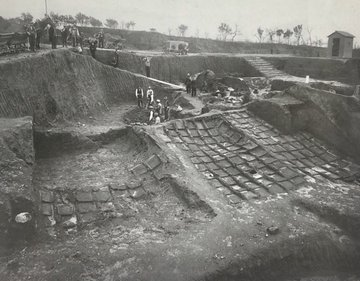
In the shadow of Mount Vesuvius, nestled along the shores of the Bay of Naples, lies the ancient Roman city of Herculaneum. Once a bustling port town frequented by merchants, traders, and aristocrats, Herculaneum met a tragic fate when it was engulfed by the catastrophic eruption of Vesuvius in 79 AD. For centuries, the city lay buried beneath layers of volcanic ash and debris, until its rediscovery in the 18th century sparked a renewed interest in the ancient world. Among the many remarkable finds unearthed at Herculaneum are the intact and collapsed Roman roofs, discovered in 1931 near the House of the Loom.
Unveiling the Secrets of Ancient Architecture
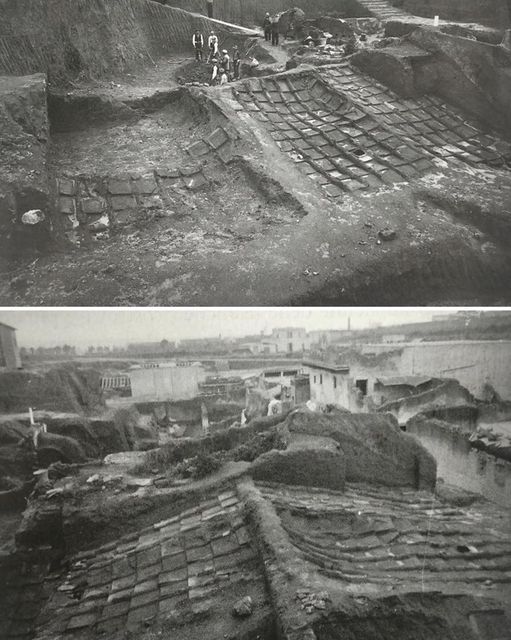
The intact and collapsed Roman roofs of Herculaneum offer a fascinating glimpse into the architectural techniques and building practices of the ancient Romans. Constructed using a combination of wood, clay tiles, and mortar, these roofs were designed to withstand the test of time and provide shelter for the city’s inhabitants. The discovery of both intact and collapsed roofs provides archaeologists with valuable insights into the structural integrity of Roman buildings and the impact of natural disasters on ancient urban centers.
Exploring the House of the Loom
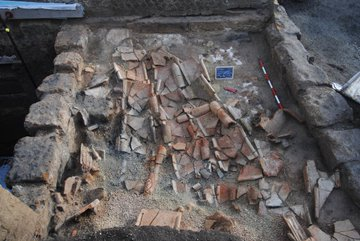
Located near the House of the Loom, the site of the intact and collapsed Roman roofs is a testament to the vibrant economic and cultural life of Herculaneum. The House of the Loom itself is a remarkable example of Roman domestic architecture, featuring intricately decorated frescoes, marble floors, and a sophisticated heating system known as a hypocaust. The discovery of the intact and collapsed roofs in close proximity to this well-preserved dwelling offers archaeologists a unique opportunity to study the interconnectedness of urban spaces and the daily lives of ancient residents.
Preserving the Legacy of Herculaneum Through Archaeology
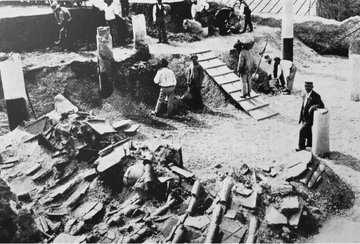
The excavation and study of the intact and collapsed Roman roofs of Herculaneum highlight the importance of archaeology in preserving and interpreting the past. By carefully documenting and analyzing these architectural remains, archaeologists can reconstruct the built environment of ancient cities like Herculaneum, shedding light on their layout, design, and function. Through ongoing research and conservation efforts, we can ensure that the legacy of Herculaneum continues to inspire and educate future generations about the wonders of the ancient world.
Uncovering the Treasures of Archaeology
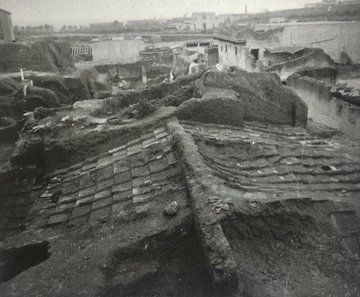
As we marvel at the intact and collapsed Roman roofs of Herculaneum, we are reminded of the enduring power of archaeology to reveal the secrets of our shared human history. From ancient cities buried beneath layers of volcanic ash to monumental structures preserved for millennia, archaeology offers us a window into the past and a glimpse of the civilizations that came before us. By supporting archaeological research and exploration, we can continue to unlock the mysteries of the ancient world and gain a deeper understanding of our own place in history.
Related Post
A shocking documentary proves that mermaids do exist
SHOCKING Revelation: Thuya, Mother of Queen Tiye, Was the Grandmother of Akhenaten and Tutankhamun—What Ancient Egyptian Secrets Did She Leave Behind?
Breaking News: Astonishing Discoveries at Karahan Tepe Confirm an Extraterrestrial Civilization is Hiding on Earth, and NO ONE Knows!
Breaking News: Researchers FINALLY Discover U.S. Navy Flight 19 After 75 Years Lost in the Bermuda Triangle!
NASA’s Secret Investigation: Uncovering the Astonishing Mystery of the UFO Crash on the Mountain!
Explosive UFO Docs LEAKED: Startling Proof That Aliens Ruled Ancient Egypt!